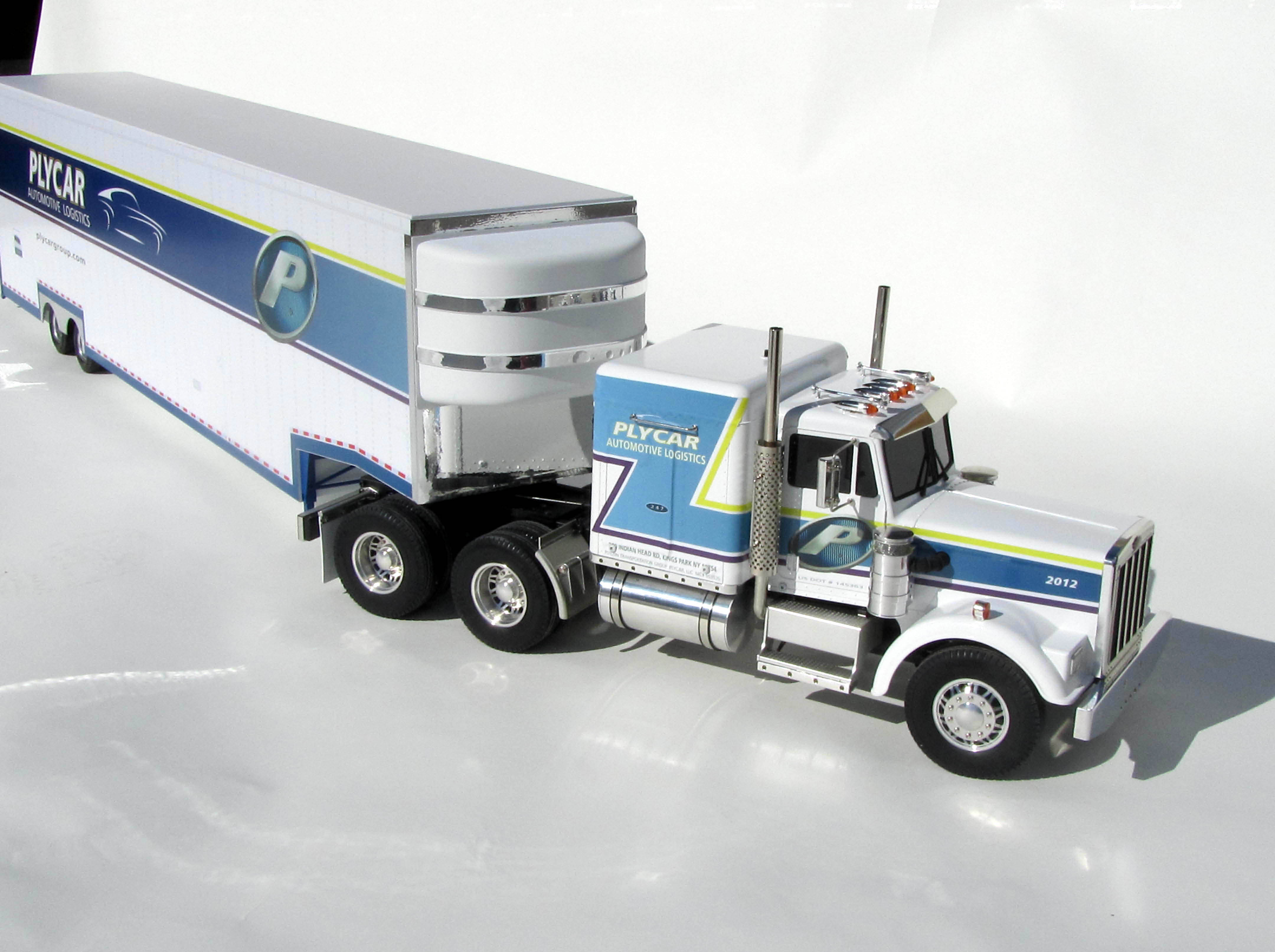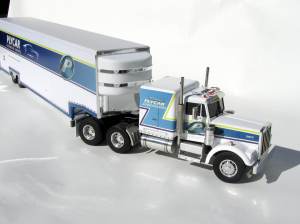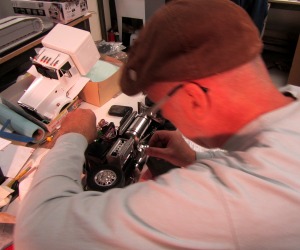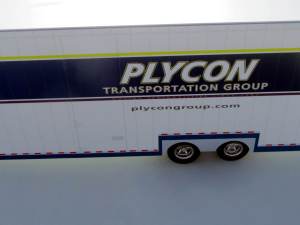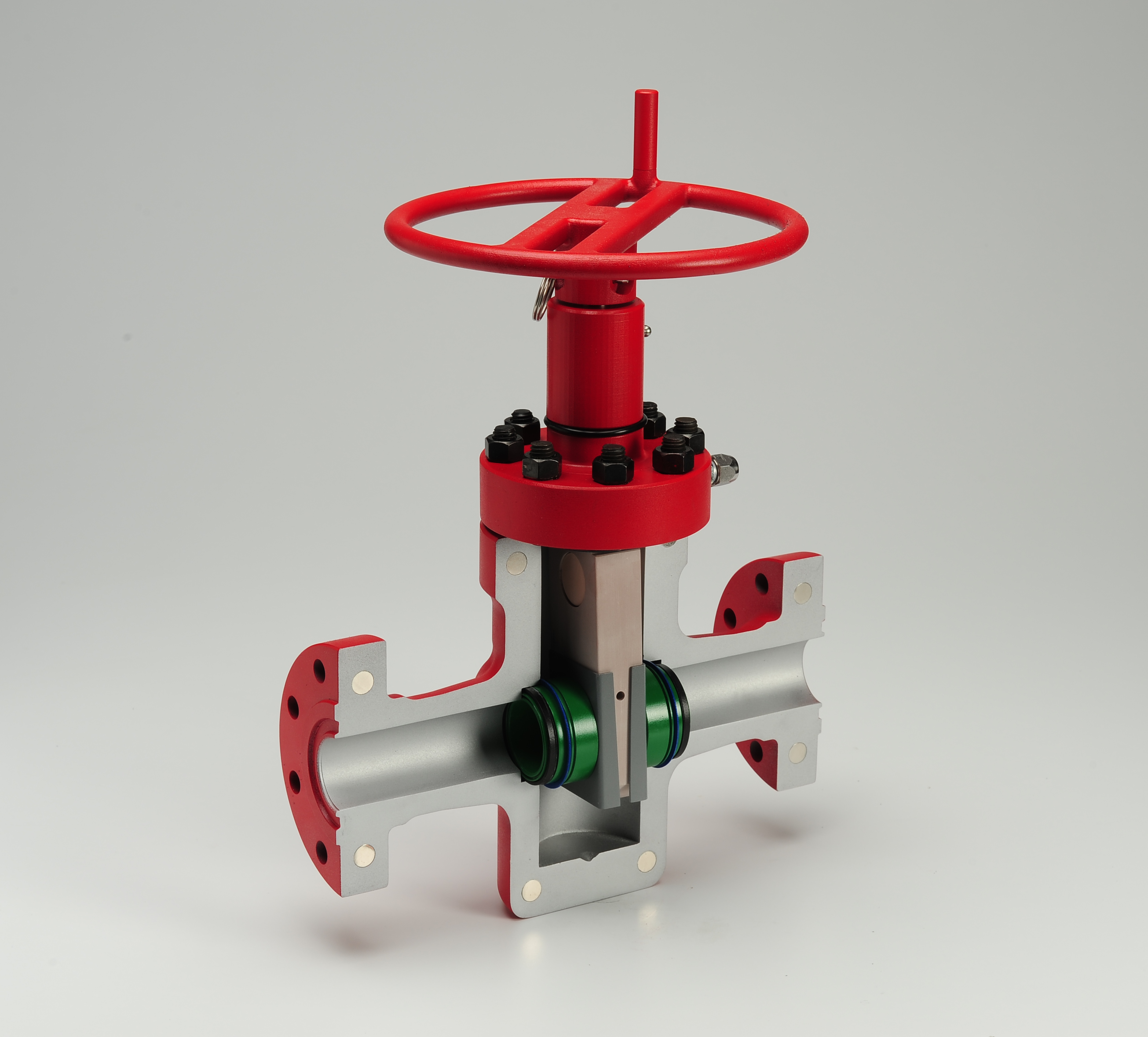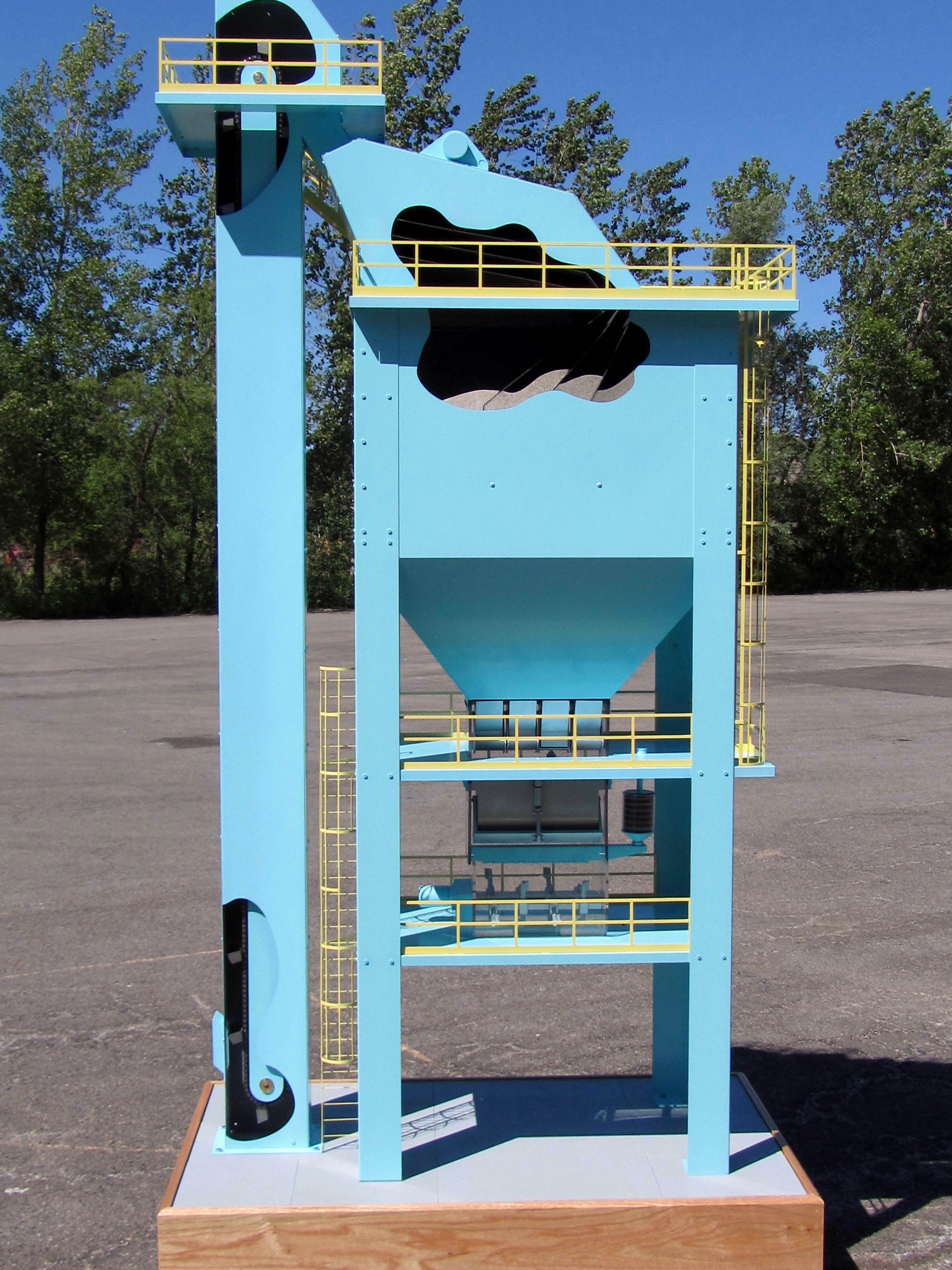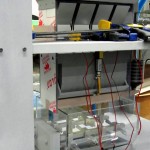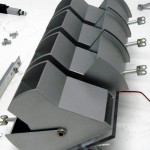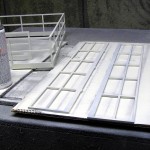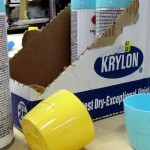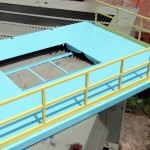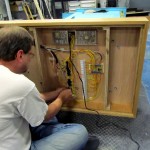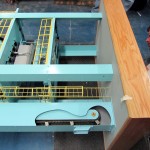Interactive features on models help to draw customers to your booth, add excitement to a museum display, and can transform a model from a boring static display to the main focus of your booth or gallery. Kids and adults alike love creating the action or turning on lights in a museum diorama, or causing water flow with the flick of a switch. A trade show display model can be brought to life by adding lights, water, moving parts, or even a miniature TV.
In this post, I’ll detail some of the interactive and moving features KiwiMill has added to the various models we have made recently.
 Miniature TV embedded into a Times Square Model
Miniature TV embedded into a Times Square Model
A trade show company came to us with ideas on how to add excitement to their trade show booth. The models were for CES, which is a consumer event, so first people had to be attracted to the display and then were encouraged to pick up the cameras and take pictures using the zoom functions in order to see the smallest details of the models. The TV in this model has a 1.8″ screen which was connected to a DVD player. This added movement and excitement to an otherwise static display model.
Computerized Asphalt Plant Model
This was a unique model for KiwiMill. Our client designed embedded controllers for asphalt plants and wanted to demonstrate the unique capabilities of their controllers on a working model. The client specified which parts of the model needed to function and KiwiMill created an interface to allow the model to animiate using their product. This model had numerous moving parts driven by motors and linear actuators.
Road Construction Truck Model
This road construction truck model is used to demonstrate the numerous features our customer built into their truck. Take a look at the video below and you’ll see just how many of these we were able to build into this model including sounds, moving parts, lights, arrow flashers, etc.
Working Hydroelectric Dam
This model was built for the U.S. government to demonstrate how hydroelectric power was created. It included a valve that could be opened to allow water to flow through a working turbine. When flow and turbine were activated, the sign on top of the turbine would light, simulating electricity generation.

